Understanding Best soil for gardening is crucial for successful gardening. The type of soil you have significantly impacts plant growth, water retention, and nutrient availability. Here’s a comprehensive guide to various soil types, how to test your soil, the essential components of healthy soil, and best practices for maintaining your garden beds.
Know Your Soil Type
Sandy Soil
Characteristics: Sandy soil is composed of large particles, which creates a loose texture. This type of soil drains quickly and warms up faster in the spring, making it ideal for early planting.
Advantages
- Excellent drainage prevents waterlogging.
- Easy to work with, allowing for quick root growth.
- Warms quickly in spring, beneficial for heat-loving plants.
Disadvantages
- Drains too quickly, leading to potential drought stress.
- Low nutrient and moisture retention.
- Requires frequent watering and fertilizing.
Ideal Plants: Sandy soil is great for drought-resistant plants like succulents, lavender, and some vegetables such as carrots and radishes.
Silty Soil
Characteristics: Silty soil has smaller particles than sandy soil, which gives it a smooth texture. It retains moisture better than sandy soil and holds nutrients well.
Advantages
- Good moisture retention and nutrient availability.
- Smooth texture makes it easy to work with.
- Generally fertile and productive.
Disadvantages
- Can become compacted, leading to poor drainage.
- Prone to erosion if not managed properly.
Ideal Plants: Silty soil is well-suited for a variety of plants, including herbs, leafy greens, and flowering plants.
Clay Soil
Characteristics: Clay soil has very fine particles that pack tightly together. It retains water well but drains poorly, leading to potential waterlogging.
Advantages
- High nutrient retention due to its dense structure.
- Can support a diverse range of plant life.
Disadvantages
- Heavy and difficult to work with, especially when wet.
- Poor drainage can lead to root rot.
- Can become hard and cracked when dry.
Ideal Plants: Clay soil supports plants like willows, dogwoods, and many perennials that can handle heavy moisture.
Loam Soil
Characteristics: Loam is often considered the ideal garden soil as it’s a balanced mix of sand, silt, and clay. It retains moisture and nutrients while allowing for good drainage.
Advantage
- Excellent fertility and structure.
- Retains moisture without becoming waterlogged.
- Easy to work with and amend.
Disadvantage
- Can become compacted in heavy rainfall if not managed properly.
Ideal Plants: Loam is suitable for almost all types of plants, from vegetables to perennials and shrubs.
Peat Soil
Characteristics: Peat soil is composed primarily of decomposed organic matter, particularly in wetland areas. It is dark, rich in nutrients, and retains moisture exceptionally well.
Advantages
- High organic matter content improves fertility.
- Excellent moisture retention properties.
Disadvantages
- Can be acidic, which may not suit all plants.
- Decomposes over time, leading to nutrient loss.
Ideal Plants: Peat soil is beneficial for acid-loving plants like blueberries and azaleas.
Test the pH of Your Soil
Testing the pH of your soil is crucial for understanding its acidity or alkalinity, which affects nutrient availability. Most plants prefer a pH of 6.0 to 7.0.
How to Test Soil pH:
- Purchase a Soil Test Kit: Available at garden centers or online, these kits provide a straightforward way to test pH.
- Collect Soil Samples: Gather soil from different parts of your garden to get a comprehensive view.
- Follow Instructions: Mix the soil with the solution provided in the kit and wait for the color change.
- Compare with pH Chart: Match the color to the chart to determine your soil’s pH.
Adjusting Soil pH:
- To Increase pH (Make More Alkaline): Add lime.
- To Decrease pH (Make More Acidic): Add sulfur or organic materials like pine needles.
The 5 Components of Healthy Soil
To create the best soil for gardening, it’s essential to understand its five key components:
1. Minerals
Minerals are the building blocks of soil and are derived from the weathering of rocks. They provide essential nutrients such as nitrogen, phosphorus, and potassium, which are vital for plant health.
2. Amend with Organic Matter
Incorporating organic matter like compost, aged manure, or leaf mold enhances soil structure, increases nutrient content, and improves moisture retention. Organic matter also promotes microbial activity, which is crucial for nutrient cycling.
3. Water
Water is necessary for plant growth and soil health. It helps dissolve nutrients, making them available for plant uptake. Maintaining proper moisture levels is critical, as both overwatering and underwatering can harm plants.
4. Oxygen
Soil must have adequate oxygen for roots and soil organisms to thrive. Compacted soil restricts oxygen availability, leading to root rot and poor plant growth. Practices like mulching and avoiding tillage can help maintain soil aeration.
5. Enlist the Help of Microorganisms
Microorganisms play a vital role in soil health by breaking down organic matter, recycling nutrients, and forming beneficial relationships with plant roots. Encouraging a diverse microbial population can enhance soil fertility and plant growth.
How to proper way to Make garden bed
Choosing the Right Location
The first step in making garden beds is selecting the right location. Look for a spot that receives at least six hours of sunlight daily, as most plants thrive with ample sunlight. Consider the proximity to water sources for easy irrigation. Also, assess the soil drainage; well-drained areas are ideal for preventing waterlogging.
Planning Your Garden Bed Layout
Before diving into construction, plan your garden bed layout. Decide on the size and shape of your beds, taking into account the space available and the plants you intend to grow. Traditional garden beds are often rectangular or square, but you can also create curved or tiered beds for aesthetic appeal. Ensure paths between beds are wide enough for easy access.
Building the Garden Bed Frame
Once you have a plan in place, it’s time to build the frame for your garden bed. Here are a few popular materials you can use:
- Wood: Untreated cedar or redwood is ideal for building raised beds due to its natural resistance to rot. Cut the wood to your desired dimensions and assemble the frame with screws or nails. A height of 12 to 24 inches is common for raised beds, making them easier to maintain.
- Bricks or Stones: For a more permanent structure, consider using bricks or stones. They offer excellent drainage and can create an attractive garden feature. Stack the materials to your desired height, ensuring stability.
- Metal: Galvanized steel or aluminum can also be used for modern raised beds. These materials are durable and provide a sleek, clean look. Be cautious with heat absorption in hotter climates, as metal can retain heat.
- Concrete Blocks: Concrete blocks are versatile and can be stacked to create beds of various shapes and heights. They can also be painted or left in their natural state for a rustic look.
Preparing the Soil
Before filling your garden beds with soil, it’s essential to prepare the area underneath. Remove any grass, weeds, or debris to prevent competition for nutrients. If you’re using raised beds, you can add a layer of cardboard or newspaper at the bottom to suppress weeds while allowing water to drain.
Next, fill your bed with high-quality soil. A mixture of topsoil, compost, and other organic matter will create a nutrient-rich environment for your plants. Aim for a soil depth of at least 12 inches to allow for proper root growth.
Best Soil Plan for Garden Beds
Creating a successful garden bed begins with understanding your soil and implementing a strategic plan.
1. Assess Your Soil Type
Begin by testing your soil type and pH. Knowing your soil will help you determine which amendments are necessary for optimal plant growth.
2. Amend as Needed
Based on your soil assessment, add organic matter to improve structure and nutrient availability. If necessary, adjust the pH with lime or sulfur to meet the needs of your desired plants.
Designing Your Garden Bed
When planting, consider the design of your garden bed. Group plants with similar water and light requirements together. Taller plants should be placed at the back or center of the bed, with shorter plants toward the front or edges. This design not only looks appealing but also maximizes space and ensures all plants receive adequate sunlight.
Planting in Your Garden Bed
Once your garden bed is ready, it’s time to plant. Follow these steps for successful planting:
- Spacing: Ensure proper spacing between plants based on their mature size. Overcrowding can lead to competition for nutrients and increased susceptibility to diseases.
- Depth: Plant seeds or seedlings at the recommended depth. Generally, seeds should be planted about two to three times their diameter in soil.
- Watering: After planting, water thoroughly to help settle the soil around the roots. Continue to monitor moisture levels, ensuring your plants receive adequate water without becoming waterlogged.
Maintenance of Garden Beds
Proper maintenance is crucial for the success of your garden beds. Regularly check for weeds, pests, and diseases. Mulching can help suppress weeds and retain moisture. As plants grow, you may need to prune or stake taller varieties to keep them upright.
Additionally, consider rotating your crops each season to prevent soil depletion and minimize disease risks. This practice encourages a balanced ecosystem in your garden and enhances soil fertility.
Seasonal Care and Amendments
Throughout the growing season, monitor your garden beds and make necessary amendments. Adding organic matter like compost or well-rotted manure can replenish nutrients. If your plants show signs of nutrient deficiencies, consider organic fertilizers to boost their growth.
In the fall, prepare your garden beds for winter by cleaning up debris and adding a layer of mulch to protect the soil. Cover crops can also be planted to improve soil health over the dormant season
Mulch with Care
Mulching is an essential practice for maintaining healthy soil and plants.
Benefits of Mulching:
- Moisture Retention: Mulch helps retain soil moisture, reducing the need for frequent watering.
- Weed Suppression: A thick layer of mulch can inhibit weed growth, reducing competition for nutrients and water.
- Temperature Regulation: Mulch insulates the soil, keeping it cooler in summer and warmer in winter.
- Nutrient Addition: Organic mulches decompose over time, adding nutrients back into the soil.
Best Mulch Materials:
- Organic Mulch: Wood chips, straw, grass clippings, or shredded leaves.
- Inorganic Mulch: Gravel or landscape fabric for long-lasting weed control.
Favor a No-Till Approach
Adopting a no-till approach can significantly enhance soil health. Tilling can disrupt soil structure, destroy beneficial microorganisms, and lead to erosion.
Benefits of No-Till Gardening:
- Improved Soil Structure: Maintains the natural layers of soil, enhancing aeration and moisture retention.
- Increased Organic Matter: Reduces the breakdown of organic material, promoting healthier soil.
- Enhanced Biodiversity: Supports a diverse ecosystem of soil organisms, which can improve nutrient cycling and plant health.
Implementing No-Till Practices:
- Use Cover Crops: Plant cover crops during the off-season to add organic matter and prevent erosion.
- Top-Dress with Compost: Instead of tilling, add compost or organic amendments to the top layer of soil.
- Practice Minimal Disturbance: Only disturb the soil when necessary for planting or removing plants.
Conclusion
Choosing the right soil type and implementing best practices for soil health is fundamental for successful gardening. Understanding the characteristics of different soil types—sandy, silty, clay, loam, and peat—enables you to select plants that thrive in your garden’s conditions. Regular soil testing, enriching with organic matter, and maintaining the right balance of water, oxygen, and microorganisms will lead to a flourishing garden. By mulching wisely and adopting a no-till approach, you can create an environment that supports healthy soil and vibrant plants for years to come. Happy gardening!


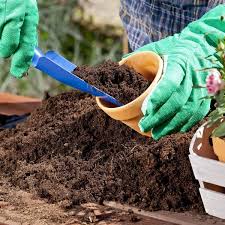
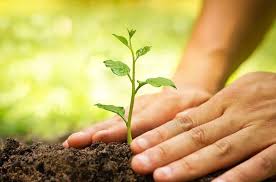
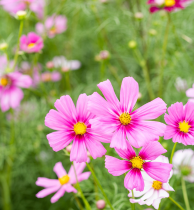
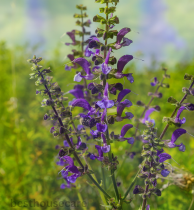
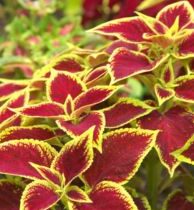
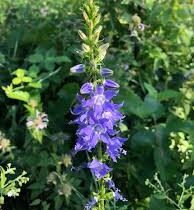
Leave a Reply
View Comments